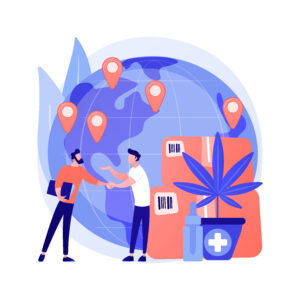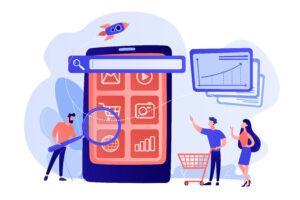The Comprehensive Guide to App Distribution for Android and iOS

Introduction
In the highly competitive world of mobile applications, getting your app from development to user adoption is a challenging journey. A crucial part of this process is app distribution—the method by which your app reaches its users. For developers working with Android and iOS, mastering the distribution landscape can make the difference between an app that thrives and one that falters.
Android, with its open-source nature, offers a variety of distribution channels, including the Google Play Store, Amazon Appstore, and Samsung Galaxy Store, as well as numerous third-party stores. This diversity provides flexibility but also introduces challenges such as device fragmentation, security concerns, and discoverability issues.
In contrast, iOS distribution is primarily through the Apple App Store, known for its strict review process and high-quality standards. While this ensures a level of trust and security, it can be a significant hurdle for developers who must adhere closely to Apple’s guidelines to get their apps approved and featured.
Beyond the technical aspects, developers face challenges like making their apps stand out in a crowded market, protecting against security threats, and choosing the right monetization strategy. Additionally, the app distribution landscape is always evolving, with new platforms and technologies emerging regularly.
This guide will explore the various app distribution channels for Android and iOS, detailing the submission processes, benefits, and challenges of each. It will also address common obstacles and provide strategies to overcome them, helping developers maximize their app’s reach and success in the competitive app market.
Common App Distribution Channels
Google Play Store (Android)

Overview:
The Google Play Store is the primary and most popular app distribution platform for Android apps. It reaches billions of users globally.
Key Features:
- Extensive user base
- Integrated with Google services
- Robust analytics and monetization options
Submission Process:
- Register as a developer
- Prepare your app (APK or AAB)
- Fill in store listing details
- Upload the app and publish
Apple App Store (iOS)
Overview:
The Apple App Store is the sole official platform for distributing iOS apps, ensuring high quality and security standards.
Key Features:
- High revenue potential
- Strict review process
- Access to a loyal user base
Submission Process:
- Enroll in the Apple Developer Program
- Prepare your app (IPA)
- Complete app information and metadata
- Submit for review and publish
Amazon Appstore (Android)

Overview:
An alternative to the Google Play Store, the Amazon Appstore is particularly popular on Amazon devices like Kindle Fire.
Key Features:
- Access to Amazon’s customer base
- Promotional opportunities
- Compatibility with Amazon services
Submission Process:
- Register as a developer
- Upload your APK
- Complete the app details
- Submit for review and publish
Samsung Galaxy Store (Android)

Overview:
Pre-installed on Samsung devices, the Galaxy Store offers a targeted audience of Samsung users.
Key Features:
Direct access to Samsung device users
- Samsung-specific app features and integrations
- Promotional support from Samsung
Submission Process:
- Register as a Samsung Developer
- Upload your APK
- Complete app details and submit for review
Other Third-Party Stores (Android)
Examples:
- Huawei AppGallery
- Xiaomi GetApps
- Aptoide
Benefits:
- Access to regional markets
- Additional promotional opportunities
Submission Processes:
Generally, involve registering as a developer, preparing the app, filling in app details, and submitting for review.
Enterprise Distribution (iOS and Android)

Overview:
For internal business apps not intended for public use.
Data storage service realistic composition with hands holding tablet and phone with cloud symbol above vector illustration
Key Features:
- Direct control over app distribution
- Enhanced security for business apps
Submission Process:
- iOS: Use Apple Business Manager or Apple Developer Enterprise Program
- Android: Use Google Play Console for private app distribution or other enterprise management solutions
Direct Distribution (Android)

Overview:
Distributing APKs directly via websites, emails, or other direct methods.
Key Features:
- Complete control over distribution
- No intermediary fees or restrictions
Challenges:
Security risks, user trust issues, and limited reach
Challenges in App Distribution

App Store Review Process
- Issue: Lengthy and stringent review processes, especially on the Apple App Store.
- Solution: Thoroughly test your app, adhere to guidelines, and prepare all necessary documentation. Respond promptly to review feedback.
Discoverability
- Issue: High competition makes it difficult for apps to stand out.
- Solution: Invest in App Store Optimization (ASO), utilize paid advertising, and engage in marketing campaigns. Encourage positive user reviews and ratings.
Fragmentation (Android)
- Issue: Diverse device configurations and OS versions.
- Solution: Thoroughly test your app across various devices and OS versions. Use responsive design and adaptive coding practices.
Security Concerns
- Issue: Risk of malware and app piracy, especially with direct distribution.
- Solution: Implement strong security measures, use code obfuscation, and regularly update your app to address vulnerabilities.
Monetization
- Issue: Finding the right monetization strategy can be challenging.
- Solution: Experiment with different models (in-app purchases, subscriptions, ads) and analyze user feedback and behavior to optimize revenue streams.
Effective App Distribution Strategy

Pre-Launch Preparations
- Conduct market research to identify target audience
- Create a landing page and social media profiles for your app
- Build a beta testing community for feedback and improvements
App Store Optimization (ASO)
- Use relevant keywords in your app title and description
- Create an engaging app icon and screenshots
- Encourage user reviews and ratings
Marketing and Promotion
- Utilize social media platforms for promotion
- Engage with influencers and bloggers in your niche
- Run targeted ad campaigns on Google, Facebook, and other relevant platforms
Post-Launch Activities
- Monitor app performance and user feedback
- Regularly update your app with new features and improvements
- Continue marketing efforts to maintain and grow your user base
Engagement and Retention
- Implement push notifications to keep users engaged
- Offer incentives for user retention, such as rewards and discounts
- Analyze user behavior to continuously improve the user experience
Conclusion
Successful app distribution requires a comprehensive understanding of the available channels, a strategic approach to overcoming challenges, and ongoing efforts to optimize and promote your app. By following the outlined strategies and best practices, developers can enhance their app’s visibility, user engagement, and overall success on both Android and iOS platforms.